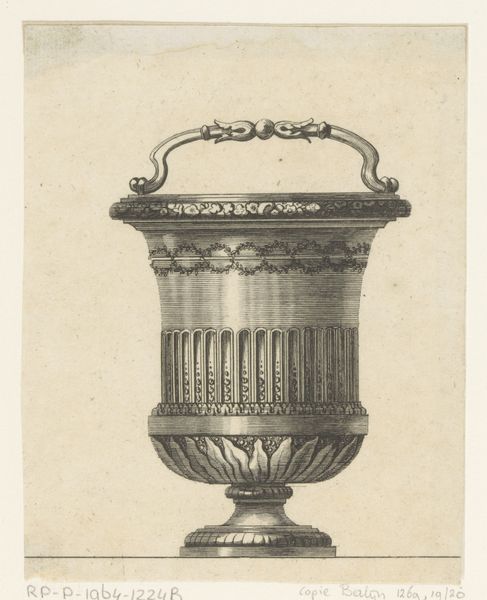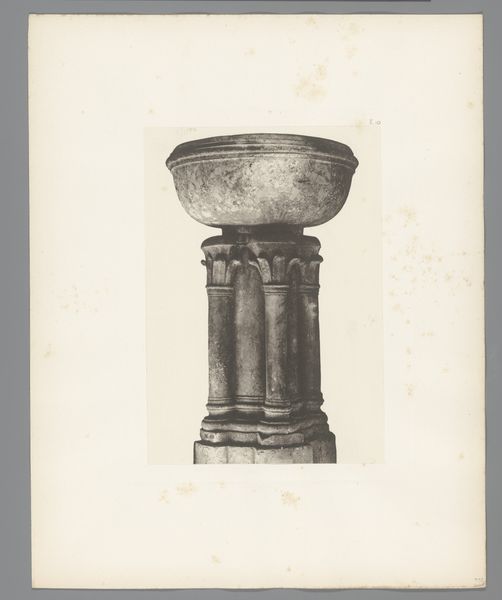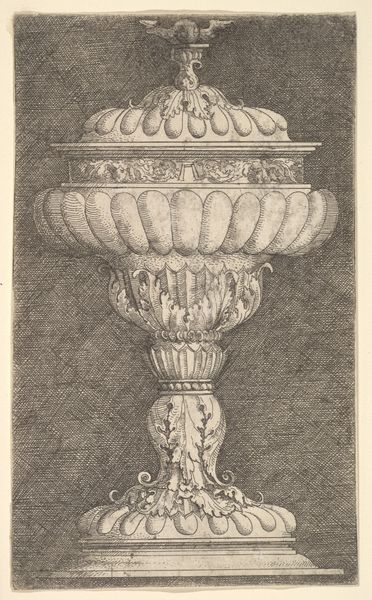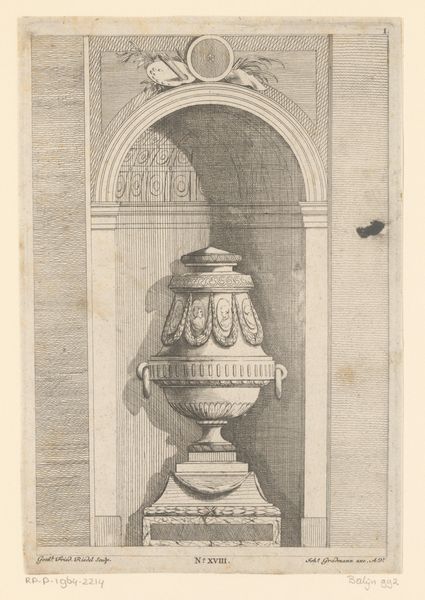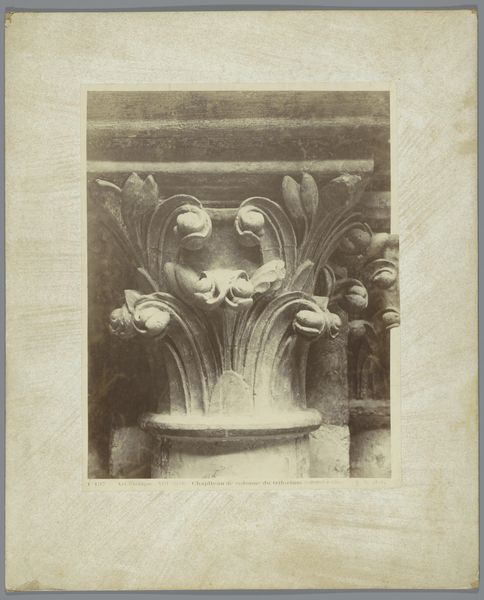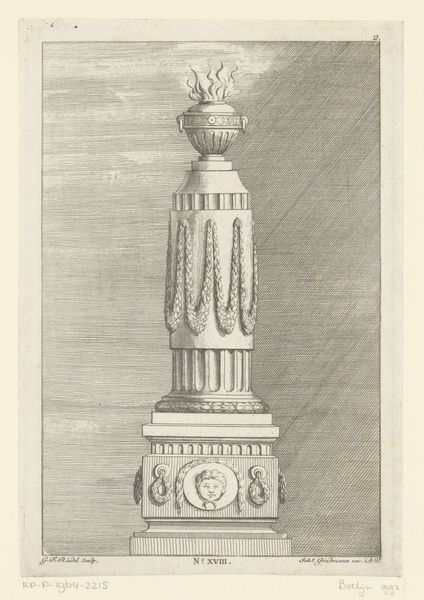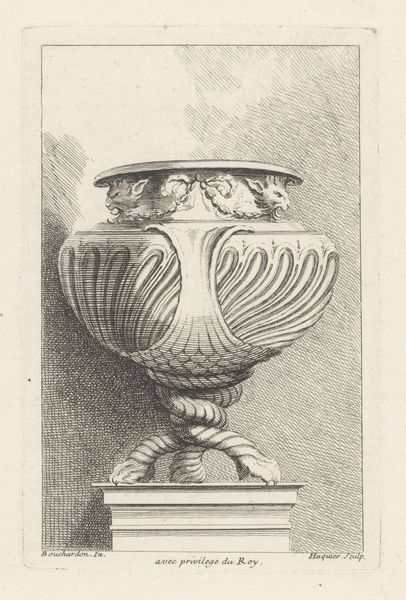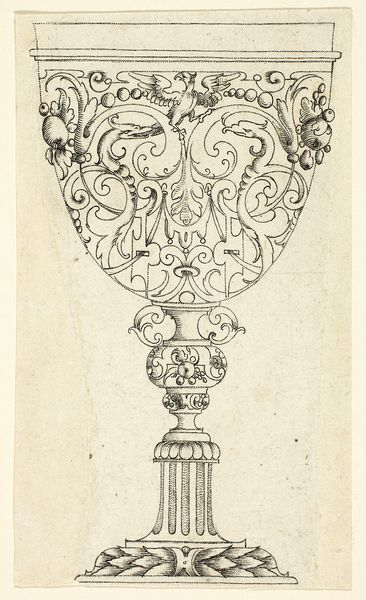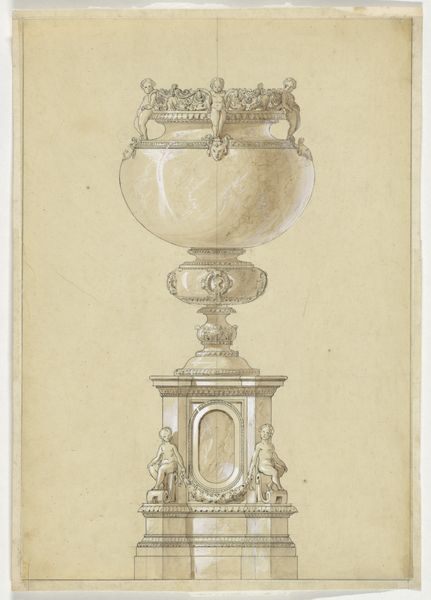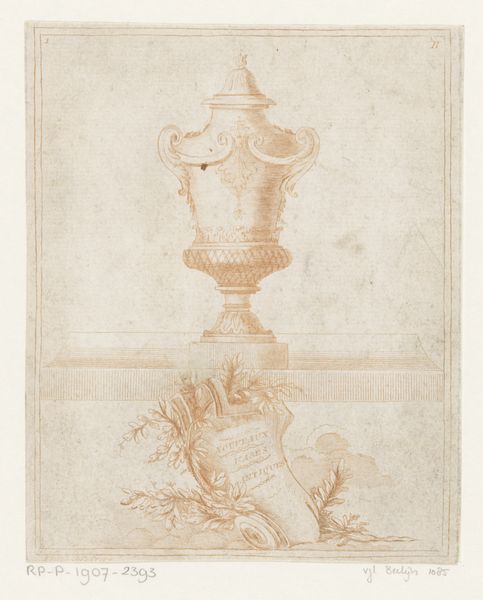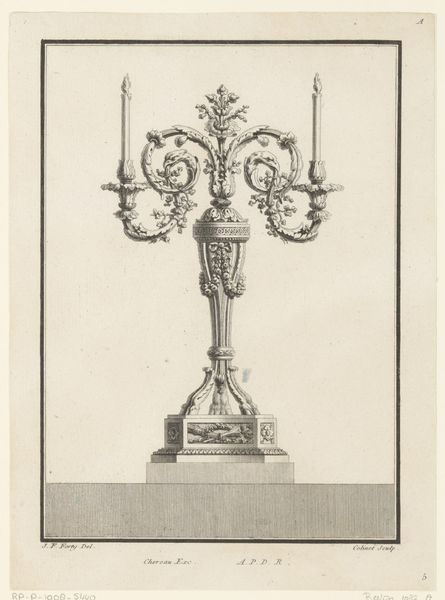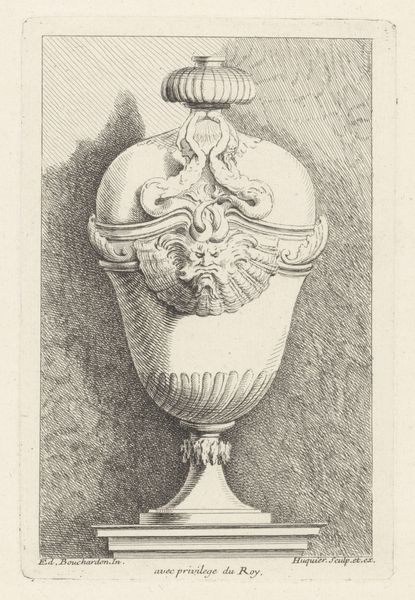
drawing, print, engraving, architecture
#
tree
#
drawing
# print
#
landscape
#
geometric
#
engraving
#
architecture
Dimensions: Sheet: 5 3/8 x 4 5/16 in. (13.7 x 11 cm) Plate: 4 3/8 x 3 13/16 in. (11.1 x 9.7 cm) Image: 4 x 3 3/8 in. (10.2 x 8.6 cm)
Copyright: Public Domain
Editor: We're looking at "Royalist trompe l'oeil," a print made between 1700 and 1800, held at The Met. It's all done in these tight engravings and drawings of geometric patterns. I can't help but see that contrast between nature and architecture and, like, which one dominates? How do you interpret this work based on its form? Curator: Considering its visual architecture, we note the circular framing device—the ovoid. Observe how it encloses, segmenting the illusion. Within this frame, we encounter two arboreal forms, one in the semblance of a classical urn. Editor: Right, the urn, it looks like a building. Curator: Indeed. The formal contrast between the organic lines of the weeping willow and the geometric precision of the architectural base becomes palpable. Now, observe the etching technique. What does the pattern accomplish, technically speaking? Editor: The hatching and cross-hatching define the volume, but also sort of flatten it again? It’s playing with depth. Curator: Precisely. We encounter a carefully orchestrated ambiguity in depth. Space is delineated only to be undermined. There's the question about semiotics and signs as well: What exactly does this mean when nature and construction combine this way? Is this about control? Editor: I guess that is true, putting nature inside of a manufactured frame like that! It really emphasizes formal constraints on the subject of the print. Curator: Quite, the artist is consciously using form to engage the viewer in this way. Editor: Seeing it that way makes me appreciate the artist's control, even in such a small work!
Comments
No comments
Be the first to comment and join the conversation on the ultimate creative platform.
